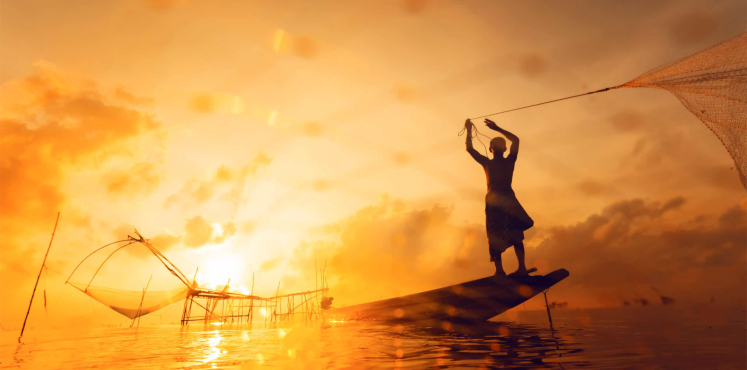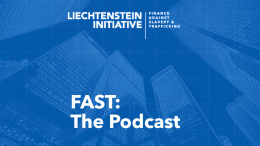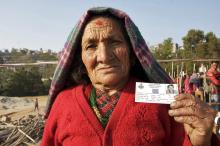Global fish production has grown seven-fold since 1950, and will grow further in years ahead. Fishing and aquaculture is a very heterogeneous industry, with especially complex (and non-linear) supply chains. Different contexts give rise to a variety of modern slavery risks and systems.
In competitive marine capture fisheries, firms resort to labour coercion as they compete for profits from often dwindling fish-stocks. Over-fishing of coastal fisheries has led to increased distant-water fishing, making state regulation more difficult – both due to distance, and due to the involvement of multiple states (coastal, flag, port, migrant workers’ countries of origin). Distant-water fishing often involves more technologically advanced, capitalized vessels, whose owners make use of off-shore legal structure, open international registers, secrecy jurisdictions and tax havens to protect profits.
This pattern is visible in the Thai fisheries sector. Its fishing fleet grew from 99 in 1961 to 57,000 in 2011. It is the largest exporter globally of canned tuna, and a major source of shrimp exports to Western supermarket chains. Depletion of coastal stocks in recent decades through over-fishing led some Thai investors to focus on inland aquaculture, while others moved further offshore. Economic growth drew the Thai workforce to other sectors, so fishing and aquaculture have relied heavily for several decades on recruitment of poor migrant workers – first from within Thailand, and then from poorer neighbouring countries (Laos, Cambodia and Rohingya displaced from Myanmar). Many are undocumented, heavily indebted, and deeply vulnerable to trafficking into slavery, including on illegal vessels far off shore, which are essentially beyond the reach of the state. A 2008 UN study found that 59 per cent of trafficking victim respondents had witnessed the murder of a fellow worker on a Thai fishing vessel. Some distant water vessels stay at sea for months at a time, trans-shipping cargo back to shore, and operating from informal bases in foreign countries. One, between Australia and Indonesia, was found to have 600 men in iron cages when it was raided in April 2015.
Forced labour is also present in seafood processing. Declining marine fish-stocks have led to significant investment in – and growth of – aquaculture over the last thirty year, with annual growth around 3 to 4 per cent. It now accounts for roughly half of all fish production. In industrial aquaculture and processing, modern slavery risks arise primarily for migrant labourers, especially women and children, and may be higher in export-oriented firms that are exposed to greater labour cost pressures. In each of these areas, debt is a crucial mechanism of control, and often amounts to debt bondage. Many migrant workers pay recruitment fees, and workers are frequently forced to buy food, accommodation, travel and other services from their trafficker. Physical isolation is also used as a means of control, with identity documents often withheld, and pay is frequently provided only at the end of a long contract period. A 2012 UN study found 33 per cent of workers in one main processing region in Thailand were trafficked. A 2011 ILO study found over 10,000 migrants in child labour.
Civil society, ILO, FAO and more recently UNODC action have drawn growing attention to modern slavery and associated organized crime risks in fishing, especially in Thailand, since around 2007. These responses have informed a wide variety of private governance initiatives and certification schemes, as well as national-level actions such as extension of labour laws to off-shore vessels and decent work programmes. The EU has used a ‘carding’ system to warn countries their seafood products may be excluded from European markets if changes are not made to address concerns related to illegal, unregulated and unreported (IUU) fishing. It gave Thailand a ‘yellow card’ in 2015, leading to a 21 per cent drop in Thai fishing export revenues the next year. The US has also used state policy levers to try to incentivize reform. In 2014, it downgraded Thailand to Tier 3 in its annual Trafficking in Persons status report, disrupting its access to US government engagement. In 2015 it threatened to revoke preferential trade status for Thai fish and seafood exports. And it has subsequently issued detention orders for seafood products thought to be made with forced labour. Private actors also took action, incorporating labour management issues into sustainability certification regimes, and, in some cases, divesting from Thai supply chains.
Prompted by this disruption, the Thai government took numerous steps to address the situation, including extending a minimum wage to fishers, overhauling fisheries monitoring and management, and strengthening anti-trafficking capabilities. Many of these reforms were supported by the ILO’s 2016-2020 Ship to Shore project, financed by the EU. These efforts led to the EU removing Thailand’s yellow card and the US promoting Thailand in its Trafficking in Persons watch list. But human rights actors have continued to allege ongoing labour rights violations, and in October 2019 the US Trade Representative suspended USD 1.3 billion in trade preferences. A March 2020 ILO estimate found that 10 per cent of fisheries workers had experienced forced labour, with larger numbers experiencing 1 of its two components (coercion – 12 per cent; involuntary work – 27 per cent) but not both. The ILO estimates there are still tens of thousands of workers in Thai fishing and seafood processing.
The Thai case reveals a number of insights into the dynamics of anti-slavery reform efforts.
First, it reveals a familiar pattern of resistance to disruption. An ILO study from early 2020 concludes that coercion and involuntary work are still prevalent in Thai fishing because “[o]fficials either do not see or simply ignore these abuses… the industry and Government officials have apparently reached an accommodation … that causes some violations to go undetected or unreported.” There is well-documented evidence of fishing companies corrupting executive, judicial and security officials at the local level to not only protect but participate in human trafficking. The relaxation of pressure by the EU and US may in turn have led to a relaxation of pressure by the Thai government on such networks. There were just 304 prosecutions in 209, and only five compensation orders have been paid since 2014.
Second, the Thai case shows the importance for reform of strategic coordination of external actors around a substantive reform agenda. In contrast to Uzbekistan, where the Clean Clothes campaign has marshalled international actors around a shared set of reform demands, there is no central body coordinating advocacy on fisheries reform towards the Thai government. Moreover, there has been an apparent willingness by external actors to accept narrow, techno-managerial solutions – such as screening apps, training, port monitoring, and supply chain audits – and avoid engaging on deeper questions of unionization, worker voice, and civil society freedom. This stands in contrast to the situation in Uzbekistan, where broader political liberalization has created an opportunity to address the political economy of cotton. In Thailand, perhaps due to the different political climate, there has been no serious effort by external actors to engage with the questions of the fishing industry’s political economy, little effort to protect space for human rights defenders raising issues related to worker rights, and little effort by buyers to connect procurement to questions of worker voice and collective action. The ILO’s Ship to Shore project concludes that while the underlying questions are “problems of power and the uses of power”, they have instead been treated “as technical problems”.
The contrasts the Thai situation with modern slavery risks in three other countries. In the Philippines, risks arise in production and processing, but especially for Filipino migrant workers on foreign-flagged vessels. Some efforts to encourage small-scale Filipino fishers to participate in markets and incorporate into supply chains may have increased debt bondage and precarity. In India, debt bondage in aquaculture and processing is a concern, especially for lower-caste, domestic migrant workers, as well as risks for male migrant workers on foreign fleets. In Bangladesh, there are similar concerns around forced labour of women and children in fish processing facilities, and increased precarity for traditional fishing and aquaculture-based livelihood as efforts to industrialize the sector take hold.
These cases point to a need for development interventions to develop a more coherent approach to economic agency for producers, workers and stakeholders across these complex value chains. To the extent that governance efforts address modern slavery risks, they have tended to do so in narrow labour-management terms, without addressing related questions of smallholder vulnerability and agency, or the institutional drivers of underlying exploitation strategies. The FAO’s new guiding principles on social sustainability in fish and seafood value chains, which includes a cross-cutting commitment to the elimination of all forms of forced or compulsory labour and child labour, may provide the basis for developing a more coherent, cross-cutting agenda for promoting economic agency across this sector. But it will need to be operationalized in different governance forums. At present the anti-slavery agenda is absent from key venues such as the regional fisheries management organizations (RFMOs). RFMOs could use their IUU registers to underpin exclusion from procurement, financing and insurance of vessels and supply chains connected to modern slavery, as well as addressing questions of worker voice in fisheries governance (as the Indonesian government has recently advocated).
Suggested citation: "Fisheries and Aquaculture," United Nations University, UNU-CPR, 2024-05-01, https://unu.edu/cpr/article/fisheries-and-aquaculture.




